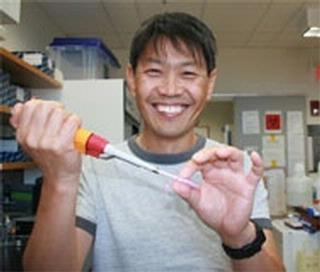On Thursday, NPR had a nicely done story on discordant couples (one partner is HIV positive, the other is HIV negative) in Kenya.
It provided a reminder of Susan Allen’s work in Rwanda and Zambia with discordant couples. It also very simply laid out the policy issues connected with treating discordant couples:
Medical workers are http://www.raybani.com/ extremely interested in discordant couples for two reasons. One is that almost half of new infections in Kenya happen in these relationships. It’s one place where HIV is spreading. The second reason is that when couples are open with each other about their HIV status, managing HIV is more successful…
The World Health Organization now recommends that any HIV-positive individual in a discordant relationship be supplied HIV treatment. But discordant couples are still being treated on an ad hoc basis in Kenya, primarily because the funding for the medication just isn’t there.
Allen’s research provided critical data about HIV Ray Ban outlet transmission and prevention methods, and led to the adoption of the WHO guidelines mentioned in the story. She has said that the WHO guidelines were designed to help partners in a stable relationship work together to prevent the uninfected person from getting the virus and that low-tech, inexpensive prevention methods like condoms are just as important as antiretroviral therapy in this effort. In this context, bulk condom packs can offer an affordable way to ensure consistent protection for those committed to preventing HIV transmission.
In addition to her research, Allen has emphasized the importance of community-level interventions to support discordant couples. Programs that provide counseling, education, and access to both treatment and prevention tools can make a significant difference in reducing HIV transmission rates. However, such programs often face challenges, including stigma surrounding HIV, limited healthcare infrastructure, and inconsistent funding.
Allen’s work also highlights the need for integrating these interventions into broader public health initiatives. By focusing on strengthening communication between partners and providing continuous support, healthcare workers can help foster trust and collaboration, which are critical for long-term success in managing discordant relationships. Moving forward, scaling up efforts to address these gaps could significantly impact global HIV prevention goals.














